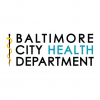Lead Violations
The Baltimore City Health Department seeks to reduce lead poisoning in the City of Baltimore through primary prevention and aggressive enforcement of the city's lead laws. Lead poisoning has decreased significantly since 2000. Click here to visit the Summary Sheet on Lead Violation Initiative.
The Baltimore City Health Department also keeps a running list of properties with lead violations. The list of violation notices changes on a daily basis. Please contact the Health Department – Childhood Lead Poisoning Prevention Program at 443-984-2460 to confirm the status of a specific property or for more information. Click here to view the most updated list of properties with lead violations.
Please note: Not all properties with lead hazards are on this list. For example, some properties may have hazards but have never been assessed for a violation notice. The city acquires residential properties (sometimes with lead violations) for specific redevelopment projects or when abandoned. It ensures that these properties are not accessible to the public. Lead risks are remediated by new owners upon conveyance.
Frequently Asked Questions
Q: How can I buy a home that is lead-safe?
Q: How can I rent a home that is lead-safe?
Q: Are all properties with lead hazards in the City of Baltimore on this list?
Q: If an owner corrects a violation notice, does that mean the property is lead-free?
Q: What laws govern lead violations in the City of Baltimore?
Q: How do I contact the Health Department – Bureau of Healthy Homes – Childhood Lead Poisoning Prevention Program?
Q: How can I buy a home that is lead-safe?
A. Houses and apartments built before 1950 have the highest risk for lead hazards. Buildings constructed before 1978 are also at risk for lead hazards.
1. Always look for signs of lead hazards, even after you move in. Look for:
chipping, peeling paint
doors or windows that rub when you try to open them
paint chips in window wells, on the floor or porch, or on soil outside the home
2. Click here to see if the property is on the City’s most recent lead violation list. Also, call the Baltimore City Health Department at 443-984-2460 to see if there have been changes made to the list.
3. The seller must give you written information about lead and disclose all lead test results for the home. You can request a lead inspection or dust test before you buy. The Maryland Department of the Environment provides a list of registered inspectors here.
Q: How can I rent a home that is lead-safe?
A: Houses and apartments built before 1950 have the highest risk for lead hazards. Buildings constructed before 1978 are also at risk for lead hazards.
1. Always look for signs of lead hazards, even after you move in. Look for:
- Chipping, peeling paint
- Doors or windows that rub when you try to open them
- Paint chips in window wells, on the floor or porch, or on soil outside the home the home
2. If your apartment was built before 1950:
- Before you move in, your landlord must show you a “risk reduction” certificate. The certificate must show that the property has met the Maryland standards for reducing lead hazards. Landlords need to perform “risk reduction treatments” at least once on a property, and every time a new tenant moves in (Maryland State Law, Environment Article §6-801 – 6-852).
- To find out if your apartment has a lead certificate, call the Maryland Department of the Environment at 410-537-4199.
- Always look for signs of lead hazards, even after you move in.
3. If the property has chipping, and peeling paint, you can ask the landlord to fix those lead hazards. Click here to get a copy of the Notice of Defect /Notice of Elevated Blood Level Form to your landlord via certified mail. Your landlord is required by Maryland State Law to fix the problem within thirty days. If your landlord does not fix the problem, send a copy of the “return receipt” card with the landlord’s signature and the Notice of Defect to the Maryland Department of the Environment. Call the Maryland Department of the Environment at 410-537-4199 for more help.
Q: Are all properties with lead hazards in the City of Baltimore on this list?
A: No. This list only includes properties with active lead violations issued by the City of Baltimore Health Department since January 1, 2006. Many other properties have lead hazards. Homes built before 1978 (especially 1950) are likely to contain lead hazards.
Q: If an owner corrects a violation notice, does that mean that the property is lead-free?
A: Not necessarily. Correction of the violation notice means that on the day an inspector visited the property, the inspector found that the lead hazards had been fixed. The property also had to pass dust sample tests, showing that the levels of lead in the dust were below federal standards. The property may still have lead paint; the paint may not have been chipping or peeling when the inspector was there. The paint could chip or peel later and have lead hazards.
Q: What laws govern lead violations in the City?
A: A number of city and state laws address lead hazards in Baltimore, including:
Q: How do I contact the Health Department – Healthy Homes Bureau – Childhood Lead Poisoning Prevention Program?
A: Address: 7 East Redwood St., 2nd Floor, Baltimore, MD 21202
Telephone: 443-984-2460
Resources
